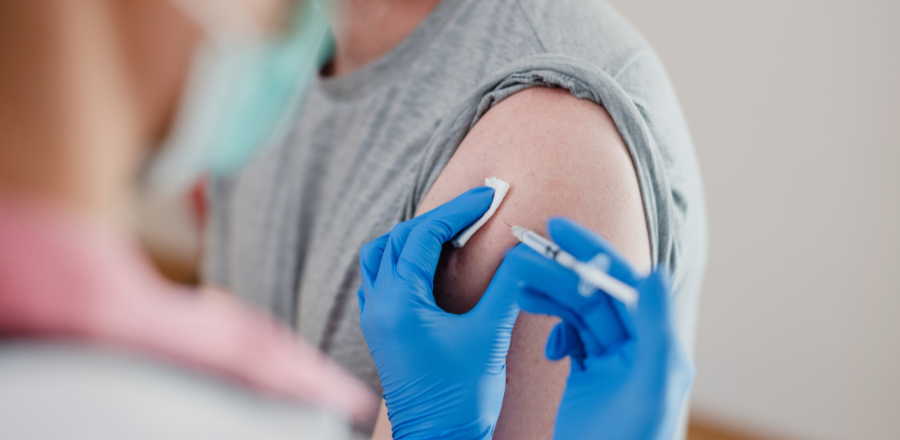Exercise Pitch Black is the Air Force’s largest biennial exercise. It aims to strengthen regional partnerships, improve interoperability between nations and promote regional stability. The exercise has origins back to 1981 and has seen an evolution in people and technology through the years.
1981-1982
The exercises were first held from RAAF Base Williamtown over 15-16 June 1981 and 28-30 July 1982 between different RAAF units, and are believed to have focused largely on air defence.
Local squadrons (No. 77 Squadron) flying Mirage IIIO fighters were coordinated by surveillance from No. 3 Control and Reporting Unit to defend against ‘enemy’ F-111C attack.
1983
Exercise Pitch Black 83 (9-13 May 1983) was held in Darwin with No. 1 Squadron and No. 77 Squadron, marking the first time the exercise was conducted in the Northern Territory. It was also the first major RAAF exercise to be held in Darwin after Cyclone Tracy in December 1974.
The exercise also saw the debut of an international partner – the United States Air Force, which brought B-52 bombers and KC-135 tankers to participate alongside RAAF Mirage IIIs and F-111Cs.
No. 114 Mobile Control and Reporting Unit, equipped with AN/TPS-43 radars, were deployed to Mount Goodwin Wadeye in the Northern Territory to provide airspace surveillance.
1984
Exercise Pitch Black 84 (May 1984) was a bigger exercise than its predecessor, held again from RAAF Base Darwin and introducing the Royal New Zealand Air Force with its A-4K Skyhawks. They were joined by United States Air Force KC-135A tankers and B-52 bombers, along with F-4E Phantom strike fighters in their debut appearance.
The United States Air Force also brought an E-3A Sentry surveillance aircraft, equipped with an Airborne Warning and Control System that provided radar coverage of the exercise area.
The RAAF participated with F-111Cs and Mirage IIIs, and was also able to use its CH-47C Chinook helicopters to lift mobile radars operated by No 114 Control and Reporting Unit around the exercise area. The Royal Australian Navy also flew a HS748 in an electronic warfare support role at the exercise, and Australian Army Porters, Nomads, and Kiowas also participated.
The undercarriage of a RAAF Mirage became jammed after one afternoon combat session, resulting in it being ditched in swampy scrubland east of Darwin, and the crew ejecting to safety. The Mirages were grounded for the remainder of the exercise until further investigation could take place.
Airspace surveillance was led by No. 2 Control and Reporting Unit for the exercise.
1986
Exercise Pitch Black 86 (4-21 April 1986) saw the exercise return to RAAF Base Williamtown, which allowed for the RAAF’s recently-delivered F/A-18 Hornet to participate in the exercise for the first time. The new Hornets were limited however to participating in Dissimilar Air Combat Training – essentially dogfighting practice with other participants – and did not support the Air Defence component of the exercise.
Once again, the United States Air Force returned with eight F-4E Phantoms, which deployed to Williamtown non-stop from Taegu Air Base in South Korea with a KC-10A Extender tanker. They participated alongside the RAAF’s own F-111Cs (from RAAF Base Amberley). No. 114 Control and Reporting Unit meanwhile located itself near Walcha in New South Wales to provide remotely deployed area defence. This was the first time a sector area defence commander had operated from a remotely deployed Sector Area Defence Operations Control (SADOC).
In the field, the Australian Army’s 16 Air Defence Regiment with Rapier missiles worked alongside the American Army’s 1BN 62nd Air Defence Artillery with Redeye Missiles. Off the coast, the Royal Australian Navy’s guided missile destroyer HMAS Hobart also provided support.
1987
Exercise Pitch Black 87 (8-19 June 1987) saw the exercise return to the Northern Territory. The RAAF’s F/A-18 Hornets (from No. 3 Squadron) participated in the Air Defence component of the exercise for the first time, and were once again joined by United States Air Force F-4 Phantoms (from the 90th Tactical Fighter Wing) along with B-52s, KC-10s, and KC-135s.
The RAAF also participated with F-111Cs, Mirage IIIs, Orions, B707s, C-130 Hercules, Caribous, Chinooks, and even Squirrel helicopters. ‘Blue Force’ Hornets and Mirages cooperated with No. 2 Control and Reporting Unit and No. 114 Control and Reporting Unit (Mobile) to provide air defence against ‘Orange Land’ F-111s, F-4Es, B52s, Orions, Hercules, and even a Royal Australian Navy HS748.
On the ground, Blue Force also comprised the Australian Army’s own 16 Air Defence Regiment, which worked with the American Army’s 25th Infantry Division. No. 114 Mobile Control and Reporting Unit provided 24-hour operations for a significant period of the exercise, deployed in the field to Port Keats in the Northern Territory, and transmitting data from the site via satellite communications link.
For the first time at Exercise Pitch Black, a RAAF Hornet conducted an aerobatic display during the RAAF Base Darwin Open Day.
1988
Exercise Pitch Black 88 (18-22 July 1988) saw the debut of the United States Marine Corps, which brought a KC-130 Hercules tanker as well as A-6 Intruder strike jets and EA-6B Prowler electronic attack jets.
The United States Air Force meanwhile debuted the F-15 Eagle in the exercise, as well as returning with the B-52 bomber and KC-135 tanker.
By 1988, the Australian Government had expressed an interest in acquiring its own Airborne Early Warning and Control platform, and USAF participation in Exercise Pitch Black 88 included the return of an E-3A Sentry surveillance aircraft (which had participated in the exercise in 1984). The RAAF’s participation in Exercise Pitch Black 88 included Hornets, F-111Cs, and for the last time, the Mirage III.
1990
Exercise Pitch Black 90 (16 July to 3 August) witnessed the first participation by the Republic of Singapore Air Force, which has returned to every subsequent Pitch Black exercise as of 2018. Singaporean F-5E Tiger fighter jets flew alongside RAAF F/A-18s and F-111Cs.
Another major first was the introduction of RAAF Base Tindal to the exercise, following its completion as a permanent base in October 1988. Exercise Pitch Black 90 also involved tactical transports like the Caribou delivering Special Air Service personnel into the exercise area and ‘probing’ ground defences.
The United States Air Force also participated with B-52 and B-1 bombers, as well as KC-135 and KC-10 tankers. The Royal Australian Navy was represented with HS748 aircraft and the guided missile destroyer HMAS Brisbane.
Once again, a United States Air Force E-3A Sentry surveillance aircraft helped provide an integrated ‘air picture’ alongside ground-based radars from No. 2 and 3 Control and Reporting Units, No. 114 Mobile Control and Reporting Unit, and the (then) developmental Jindalee Over the Horizon Radar (JORN), providing the most comprehensive coverage of northern Australia since World War II.
1991
Exercise Pitch Black 91 (16-30 August 1991) saw the RAAF introduce its own air-to-air refuelling capability, with a recently modified Boeing 707 tanker able to refuel RAAF Hornets during missions.
The exercise also saw the first major participation of RAAF Base Curtin – a bare base in the north of Western Australia, which had been completed in 1988. Curtin became home of ‘Orange Force’ during the exercise, which played the role of the enemy forces in the exercise scenario, and supported 110 personnel and about 50 aircraft including 76 Squadron Macchis and 75 Squadron Hornets.
‘Blue Force’ aircraft operated from RAAF Bases Darwin and Tindal. The latter base’s defences on the ground were tested, with No. 2 Airfield Defence Squadron facing off against elements of Army’s 3RAR and the Special Air Service Regiment.
Returning to Exercise Pitch Black were the United States Marine Corps A-6E Intruder and EA-6B Prowlers, Republic of Singapore Air Force F-5E Tigers (along with A-4 Skyhawks jets and E-2C Hawkeye surveillance aircraft; and United States Air Force F-15C Eagles, supported by a KC-10A Extender tanker.
1993
Exercise Pitch Black 93 (26 July – 13 August 1993) saw the debut of the Republic of Singapore Air Force F-16 fighters at Pitch Black. They were joined at Darwin by Singapore’s A-4 Skyhawks and an E-2C Hawkeye.
The United States Air Force participated from RAAF Base Darwin with a squadron of 18th Wing F-15C Eagles from Kadena Air Base in Okinawa, and a pair of B-52 bombers from the 596th Bomber Squadron.
RAAF Hornets operated form RAAF Base Tindal, where they were also supported by a No 33 Squadron detachment providing Boeing 707 tanker air-to-air refuelling. Radar surveillance was provided by 1 Radar Surveillance Unit at Jindalee.
1994
Exercise Pitch Black 94 (4-18 August 1994) involved a return from the United States Marine Corps, this time operating AV-8B Harrier strike jets from RAAF Base Darwin. Alongside them were Republic of Singapore Air Force F-16s, A-4s, F-5s, and E-2C Hawkeye.
RAAF Base Curtin was once again used, this time housing RAAF F-111Cs from Nos 1 and 6 Squadrons in the role of ‘Orange Force’ enemy strike jets. F/A-18s from Nos 3 and 75 Squadrons were exposed to a wide range of opposing aircraft.
1996
Held from 15 July to 2 August 1996, Exercise Pitch Black 96 involved approximately 4000 people, including a greater American presence with the return of United States Air Force F-16s, KC-10s, B-52s, and an E-3A Sentry surveillance aircraft in the exercise.
The Republic of Singapore Air Force returned with F-16s, a pair of E-2C Hawkeyes, KC-130B Hercules tankers, and A-4 Skyhawks. RAAF involvement included staples such as its F/A-18s, F-111Cs, and Boeing 707 air-to-air tankers.
United States Marine Corps F/A-18 Hornets flew alongside No 75 Squadron RAAF Hornets from RAAF Base Tindal.
Once again, the subject of an Airborne Early Warning and Control capability for the RAAF was brought into focus by the exercise, which saw both friendly Blue Force and opposition Orange Force employing their own airborne surveillance aircraft for the first time.
1997
Exercise Pitch Black 97 involved just the RAAF and the Republic of Singapore Air Force.
It once again included RAAF F-111Cs from Amberley along with F/A-18 Hornets from Nos. 75 and 77 Squadron, and Boeing 707 air-to-air refuelling tankers and C-130 Hercules.
Singapore participated with F-16s and A-4 Skyhawks, along with a pair of C-130 Hercules.
1998
Exercise Pitch Black 98 (17-28 August 1998) introduced the Royal Air Force to the exercise, bringing an E-3D Sentry surveillance aircraft and two C-130K Hercules transports.
It also involved Republic of Singapore Air Force A-4 Skyhawks, F-16s, E-2C Hawkeyes, and KC-130Bs.
The exercise involved RAAF F/A-18s, F-111s, C-130s, Machhis, B707s, and a P-3C It was also the finale for the RAAF’s MB326 Macchi jets involvement in a Pitch Black exercise, operated by No. 79 Squadron from RAAF Base Tindal.
While past Pitch Black exercises involved AEW&C aircraft in the air defence role, this year saw the E-3D and E-2C used extensively in the strike direction role.
2000
Australian aircraft included F/A-18 Hornets, F-111 strike aircraft and C-130 Hercules, as well as Boeing 707 refuelling aircraft.
The Royal Air Force returned to Australia for Exercise Pitch Black 2000 (22 Jul – 5 August 2000), this time bringing an increased contingent – Tornado GR.4 strike and F.3 fighter jets, along with two VC-10 tankers and E-3D Sentry surveillance aircraft.
The Republic of Singapore Air Force likewise returned with F-16 fighters, RF-5s tactical reconnaissance jets, and an E-2C Hawkeye surveillance aircraft. The United States Marine Corps also participated with 12 F/A-18D Hornets coming from Hawaii. Both provided KC-130 refuelling aircraft.
Infamously, a 1974 Landcruiser was destroyed in Darwin when an AIM-7 Sparrow training device detached from a RAAF Hornet as it was returning to base – happily, without injury.
2002
Exercise Pitch Black
/Public Release. View in full here.






